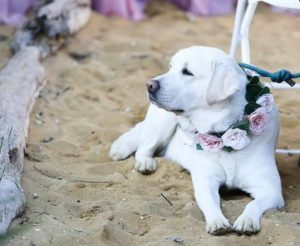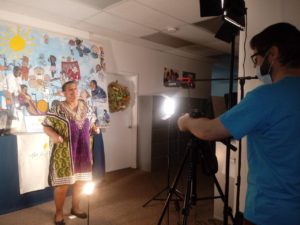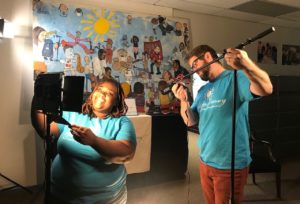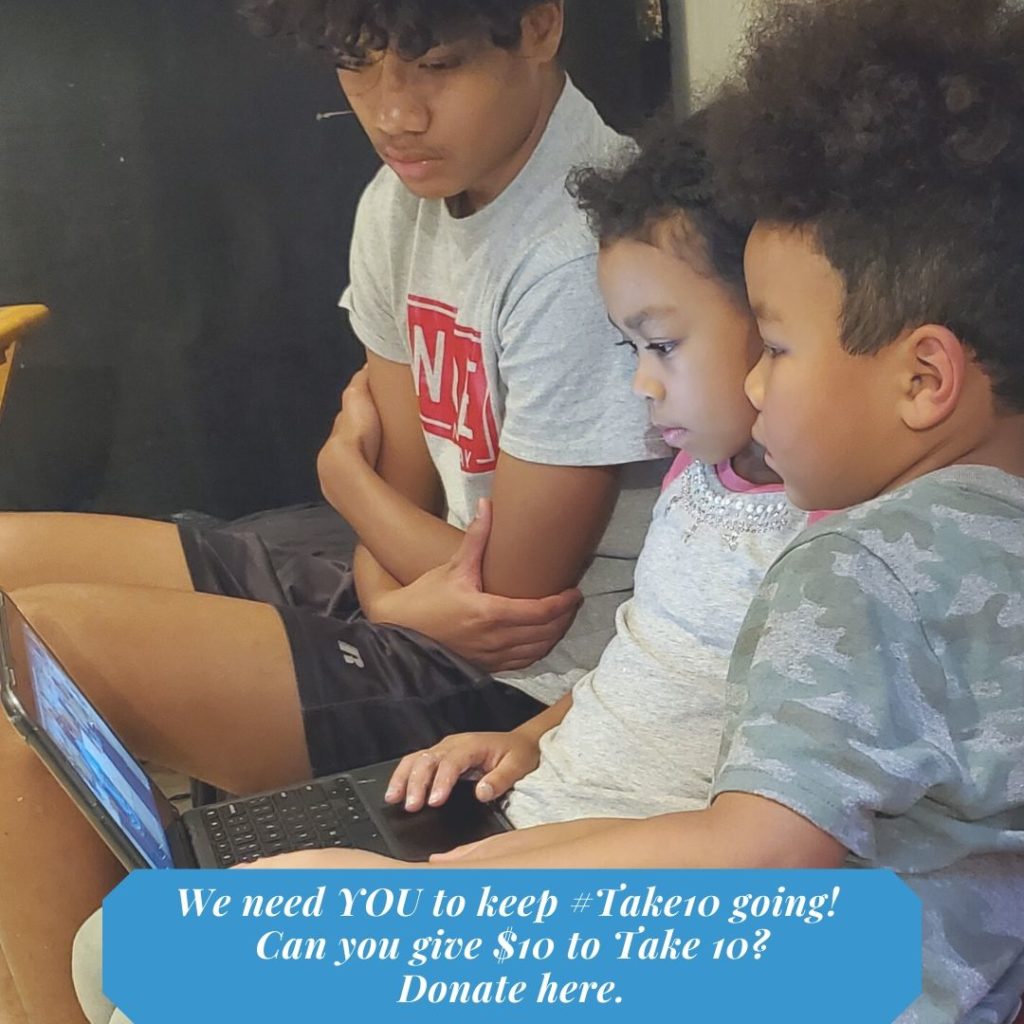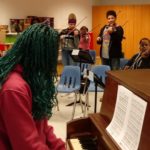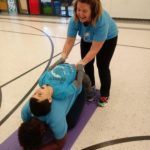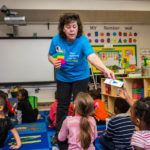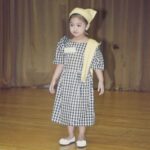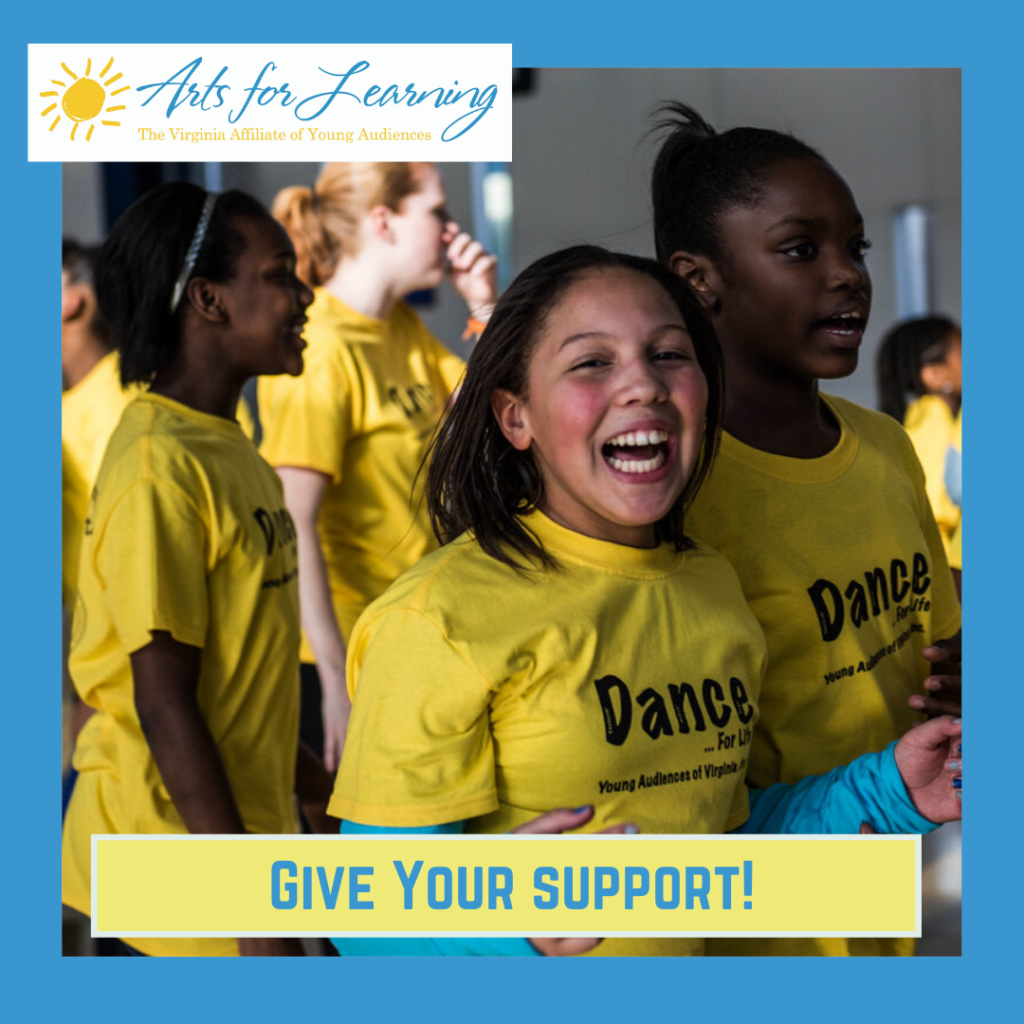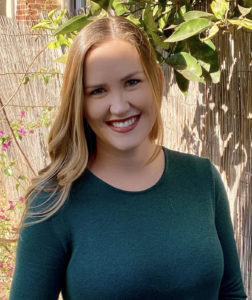 When Molly Stanley first saw the job listing for this new role at Arts for Learning, she grew excited. She and her husband Ethan, a lieutenant in the Navy, along with their newborn baby, were in the process of being transferred from California to Hampton Roads. As someone who had worked as an arts teacher and who had a master’s degree in arts administration, Molly found the opportunity intriguing. Plus, as a new mom, she was searching for a career with greater flexibility.
When Molly Stanley first saw the job listing for this new role at Arts for Learning, she grew excited. She and her husband Ethan, a lieutenant in the Navy, along with their newborn baby, were in the process of being transferred from California to Hampton Roads. As someone who had worked as an arts teacher and who had a master’s degree in arts administration, Molly found the opportunity intriguing. Plus, as a new mom, she was searching for a career with greater flexibility. 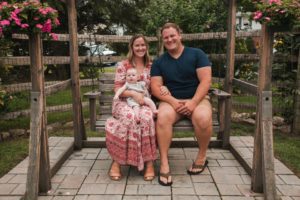
“If I wasn’t going to be teaching, I still wanted to work in education because that’s what I’m most passionate about, along with arts administration.
This position was like marrying the two things—arts administration and teaching art.”
Molly began her teaching career several years ago when she worked as an art teacher at a Title 1-designated elementary school in North Philadelphia. Although she grew up less than an hour away, it was a different world from her rural home in Blandon, Pennsylvania.
“I gained a lot of perspective and learned a ton while I was there [teaching]. It was a really hard year. I thought because I knew my craft and knew how to teach art that I could do anything, but I wasn’t aware of what trauma responses looked like in the classroom and so my classroom management definitely wasn’t good.”
From Philadelphia, Molly became an art teacher at a middle school in Maryland.
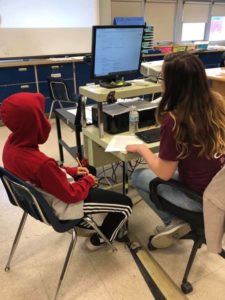
The school also was in a high poverty area, but she says she had many more “tools in her toolbox” and learned how to be a successful educator while forming close relationships with her students and her partner teacher.
During her second year of teaching, she and Ethan married.
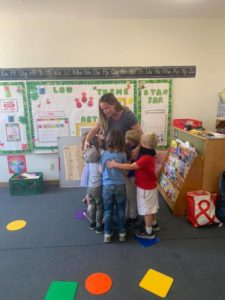
As a military family, the two first moved for a few months to Washington state and then to southern California, where Molly taught preschool and worked on her master’s degree on-line, earning it a week before she gave birth in May to baby William. That coincided with Ethan receiving orders to come back to the east coast for what is expected to be a long-time assignment.
Molly started at Arts for Learning in September, where she’s been putting her curricular knowledge to good use, writing classroom guides for our Spread Kindness (Not Germs) video project and more programs. She has big goals for her time here.
I’m hoping to be able to put out quality content and curriculum that aligns with what teachers need, as well as what the art form is, whether it’s a music program, a dance program, a visual arts program, or some other art form.”
“I want to be able to provide a smooth transition into either a teacher being able to take that content and teach it themselves or assisting teaching artists in making that content as relevant as possible to what the kids are going to need,” she says. “Specifically, like with Spread Kindness (Not Germs), the first project I was given, I made it my goal to try and make sure it’s as user friendly as possible and that anyone could teach it.” 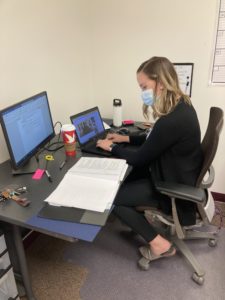
So far one of the most satisfying parts of Molly’s new role has been pitching the Spread Kindness project to fine arts supervisors from different school divisions and discovering how enthusiastic they are about implementing the music videos in their classrooms.
As for the hardest part?
“I’ve never not been a teacher. I’ve always been a teacher, and I know what to expect as a teacher. But it’s also been the best part because I’m learning how to function in an organization that isn’t a school. So it’s been interesting getting acclimated to the job and also at the same time it’s super exciting because there hasn’t been one part yet that I haven’t enjoyed.”
Fun Facts About Molly:
#1 Though she doesn’t have much time these days between the new baby and new job, Molly is a visual artist who typically draws using colored pencil. Architectural portraits and landscapes are favorite subjects.
#2 She’s primarily of Irish descent, and even though she comes from a “big, proud Irish family,” she’s never had the chance to visit Ireland. Her maiden name was Molly McKenna Flannery.
#3 William is her first human baby, but she and Ethan first had a fur baby named Dixie, a Labrador Retriever, who now adores baby Will and wants to be by his side constantly. Dixie looked especially pretty decked out in flowers for the couple’s wedding ceremony. 